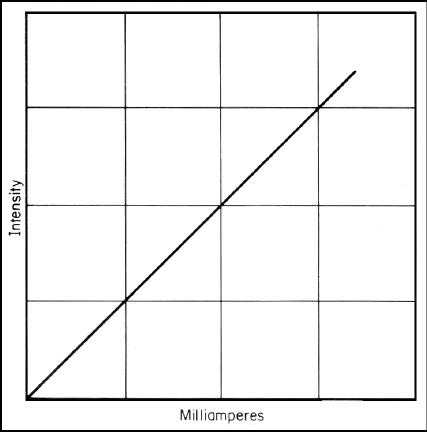T.O. 33B-1-1
6-9
6.2.3
Effects Of Voltage and Amperage on X-Ray Production.
6.2.3.1
Effect Of Voltage.
In different equipment, different methods are used to accelerate the electrons. In the smaller X-ray generators, up to
and including two million volt units, acceleration is accomplished with transformers to step up the incoming power line
voltage and apply it between the anode and the cathode of the X-ray tube. Since the X-ray generators operate at very
high voltages, the unit kilovolt (kV) is used to designate one thousand volts. As the kilovoltage (the potential that
causes the electrons to accelerate) is changed, the kinetic energy of the moving electrons is changed, altering the energy
of the resulting X-radiation. As the kilovoltage is increased, the efficiency of converting the electrical energy into X-
rays is increased. Therefore, when kilovoltage is changed, the penetrating capability of the generated radiation is
changed, and the quality of radiation is altered due to the efficiency of electrical energy converted into X-rays.
Selecting the proper kilovoltage is very important in industrial radiographic applications.
6.2.3.2
Effect Of Amperage.
Amperage is a measure of the amount of electrical current applied to the filament. It is also a direct measurement of
the number of free electrons available in the X-ray tube and is independent of variations in kilovoltage. Thus the
quantity of X-radiation is in direct relation to the filament current. Typically, the amount of current is small, so the
unit milliampere (mA), milliamp for short, is used to designate one one-thousandth of an ampere. The effect of
milliamp changes on the radiation output is shown in Figure 6-7.
Figure 6-7. Effect Of Filament Current on Radiation Quantity.

